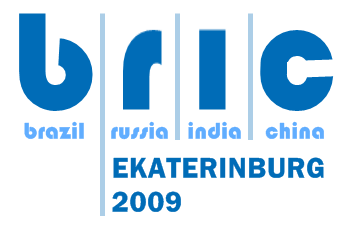The much awaited Pradhan Mantri Awas Yojana has been launched by the Prime Minister Narendra Modi that envisages the vision of Housing for All by the year 2022. The article includes various aspects of the scheme covering the beneficiaries, eligibility and the process for applying under the scheme.
The government of India had earlier launched ‘Housing for All’ scheme, which has now been reformed as Pradhan Mantri Awas Yojana. The Scheme has been launched by the Prime Minister of India, Narendra Modi on 25th June 2015.
The scheme comes with an aim of constructing more than two crore houses across the length and breadth of the nation within a span of next seven years. This means the scheme which is started in year 2015 would conclude successfully in the year 2022. The target beneficiaries of the scheme would be poor and people living under EWS and LIG categories in urban establishments of the country.
Pradhan Mantri Awas Yojana Housing for All 2022:
The PM Awas Yojana would start in the year 2015 and would be spread for implementation till the year 2022 and would be carried out in three sustainable phases:
Pradhan Mantri Awas Yojana Phase 1: The Phase 1 of PM Awas Yojana would span from April 2015 to March 2017 and a total of 100 cities would see the developmental work started and completed during this phase.
Pradhan Mantri Awas Yojana Phase 2: The Phase 2 of Pradhan Mantri Awas Yojana would span from April 2017 to March 2019 and during this phase, a total of 200 more cities would be covered and developed.
Pradhan Mantri Awas Yojana Phase 3: The Phase 3 of PMAY would span from April 2019 to March 2022 and during this phase the left over cities would be covered and developed.
Beneficiaries of Pradhan Mantri Awas Yojana:
Pradhan Mantri Awas Yojana would target specific groups from the society, which are:
- Women, irrespective of caste and religion.
- Economically Weaker Section of Society (EWS).
- Scheduled Tribes (ST).
- Scheduled Casts (SC).
- The Government of India would be granting a subsidy to people from these. categories so that they buy a home for themselves and their families.
- The subsidy amount may range from Rs 1 lakh to Rs 2.30 lakh.
The features of Pradhan Mantri Awas Yojana are as following:
The government would provide an interest subsidy of 6.5% on housing loans availed by the beneficiaries for a period of 15 years from the start of loan. The houses under Pradhan Mantri Awas Yojana would be allotted to preferably the female member of the family. Along with this, preference would be given to the female applicants, in general. This scheme could well be termed as a pro-women scheme.
While allotting ground floors in any housing scheme under the PMAY, preference would be given to differently-abled and older people. The construction of houses under PMAY would be carried out through technology that is eco-friendly. Interest Rates, EMI Calculation and Subsidy in PM Awas Yojana
The niche of the scheme lies in the fact that the EMI paid by the home owners under the scheme would be reduced significantly. The current rate of housing loan in India is at 10.50 per cent. If someone buys a property currently on a loan of Rs 6 lakh for a tenure of 15 years today, he/she would have to pay an EMI of Rs 6,632 per month currently. However, with 6.5 per cent subsidy under the scheme, the beneficiary would have to pay just Rs 4,050 per month as EMI. Thus, there is a significant reduction of Rs 2,000 in the EMI itself.
Pradhan Mantri Awas Yojana Compnents (Housing for All 2022):
An average of Rs 1 lakh would be granted by the Government of India to all the beneficiaries under the scheme. Through Credit Lined Subsidy Scheme, a subsidy of 6.5% would be given to each beneficiary belong from EWS and Lower Income Group categories. A central government assistance of Rs 1.5 lakh would go to every beneficiary for promoting housing stock and thus 35% of the units under the project would be earmarked for the Economically Weaker Section category.
In addition to the above, an Rs 1.5 lakh would be provided to all eligible urban poor who want to construct their own house in urban areas or wish to make necessary renovations in their existing houses.
ICICI bank Awas Yojana Loans at subsidized rates of 6.5 %
The ICICI bank has planned a scheme to provide millions of Indian, their own dream house, which currently they cannot afford right now. This scheme is in support to the Prime Minister’s housing scheme for the common masses namely the Awas Yojana. Under this scheme, the ICICI will provide easy housing loans with low interest rates andeasy options of EMI so that the financially weaker sections of the population can also accomplish their dream of having their own house.
Under this scheme, the ICICI will provide housing loans at subsidized rates of 6.5 % annually for the loan amount of Rs. 6 lakh (maximum). This subsidy will be credit linked. This housing loan will be provided along with the partnership with National Housing Bank, which will administer the entire housing project. And the maximum loan tenure to get the subsidy is 15 years.



